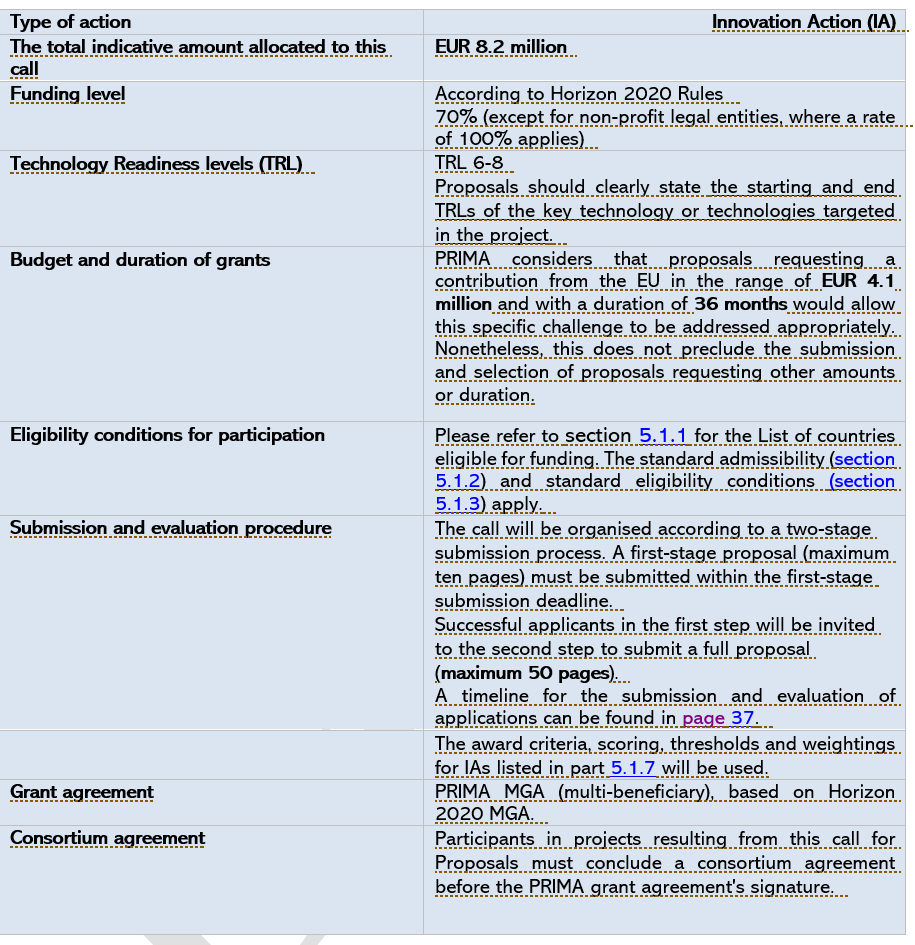THEMATIC AREA:
Water Management
TOPIC:
1.1.1 (IA) Sustainable and integrated management of natural and artificial water storage systems and distribution infrastructure
TYPE OF ACTION:
TOTAL INDICATIVE AMOUNT ALLOCATED TO THIS CALL:
OPENING DATE:
DEADLINE;
Stage 2 Full proposals – 6 September, 2022 (17:00h Central European Time (CET)
STATUS: Closed

